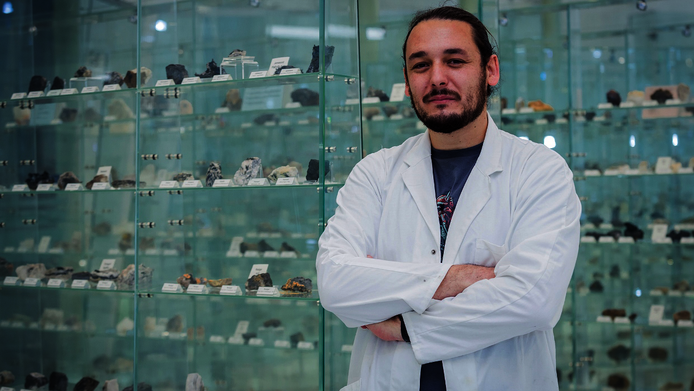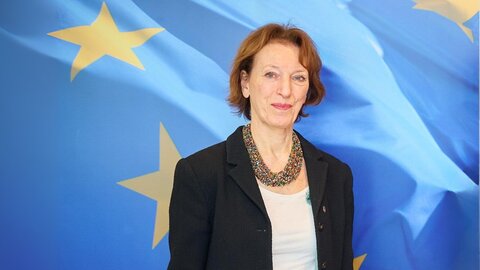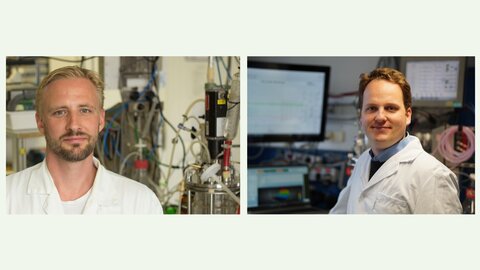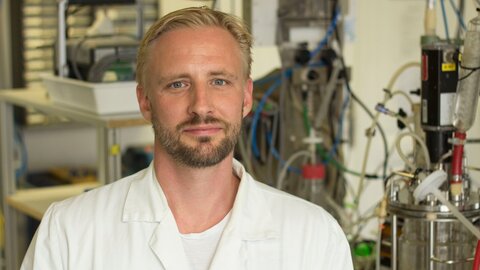A rare crystal as an ultrathin magnet

FWF: What kind of materials are you interested in? Aleksandar Matkovic: They are called Van der Waals materials and consist of ultrathin layers with very weak interlayer bonding – you can picture them like a stack of very thin sheets of paper. The group of Andre Geim and Konstantin Novoselov at the University of Manchester was the first to isolate monolayers of this class of materials in 2004, an achievement which earned them the Nobel Prize in 2010. The monolayers are very interesting for a range of applications, mainly in electronics but also in sensing. The most prominent example of such a 2D material is graphene, which is obtained from graphite. But there is one aspect of these materials that was completely ignored in research between 2004 and 2017: their magnetic properties. FWF: Why was this missing until now? Matkovic: Magnetic Van der Waals materials are very scarce, and usually involve rare earths. The entire community is currently focused on iodites and tellurides because they show a very strong response, but their magnetic properties only exist in high vacuum and at cryogenic temperatures, at 3 to 4 degrees above absolute zero. But they contain chlorine, iodine or tellurium on the surface of their monolayers, which means they oxidise very fast. These materials would burn instantly even in a high orbit around the Earth. They are not suitable for technological applications. That is why we concentrate on talc instead. FWF: What makes talc so special? Matkovic: We know from geology that talc seldom occurs in a completely pure form. Producing synthetic talc is a big thing in the cosmetics industry. They like to use the synthetic version because natural talc often contains iron. That aroused our interest because iron has a high propensity for being magnetic. Iron finds its way into this crystalline structure very easily and replaces magnesium. And in contrast to tellurides and iodites it is very stable. Each sheet of talc consists of a layer of magnesium hydroxide between two layers of silicon oxide – which is glass, basically. The entire sheet is only one nanometre in thickness. It's as if the middle layer is perfectly encapsulated between the two silicon oxide layers. We had a closer look and were lucky to find very rare samples of iron talc crystals for doing preliminary studies.
The Montanuniversität Leoben has a large mineral collection and made very pure talc available to us. We were also lucky in that one of our master’s degree students had a mineral collection of his own and gave us a piece of talc which was very rich in iron. We investigated the material to see if we could get a magnetic response. We succeeded in showing that there actually is magnetism, albeit weaker than in the materials of the other groups, but we found it when exposed to air and at ambient temperature. That is a huge game changer for the entire field. FWF: So you work with natural talc? Matkovic: The project consists of two stages. In the first stage, we are going to work with natural minerals. Through our contacts to mineralogists at the University of Minnesota in the US we have already secured a sample of a mineral called minnesotaite, which is basically talc with an inner layer of 100 % iron. The mineral is very rare, mainly because people have never been interested in it up to now. We managed to get a piece the size of one cubic centimetre from the university which was cut out from the main crystal after which the mineral was named in the 1960s. This amount will last for a lifetime of basic research. In the first two or three years we want to do research as much as we can on natural samples. And once we know which are the most promising candidates, we want to start synthesising talc crystals ourselves. This is going to be a challenge because the industrial process for making talc gives you a powder, and not crystalline layers. FWF: How are you planning to go about it? Matkovic: There is a material of very similar structure, mica, which forms the biggest crystals in nature, several square metres in size. The material looks complex, but builds up naturally. We want to understand and use these mechanisms to grow monolayer crystals. In recent years great advances have been made in synthesising Van der Waals materials which will serve as a starting point. FWF: How does the START Prize affect your research? Matkovic: For me personally it’s a huge step forward. I‘m not a full professor here at the university in Leoben. As a postdoc I received a Luise Meitner Fellowship from the FWF, and it was during this fellowship that I realised the great potential of talc crystals. Talking to geologists in Leoben we found that this could be a really big thing and we decided to try and raise more funding for it. I‘m extremely happy to have received the award. So now I have the funding to devote myself to this subject over the next six years. FWF: What do you find particularly motivating about this subject? Matkovic: I am fascinated by experimental research with 2D materials. These monolayers are something that you can literally hold in your hand. In some cases you can even see it with the naked eye - an atomic monolayer, right there before your eyes. That I found really fascinating.
Aleksandar Matkovic is a researcher at the Montanuniversität Leoben. Situated between applied physics and material science, his work revolves around 2D materials. He is also interested in self-assembly processes.
About the project The project “The invincible iron talc – 2D magnetic layers” is dedicated to an investigation of magnetic properties of monolayer materials on the basis of phyllosilicates and hydroxides that are only a few atoms thick. Talc in particular, which consists of such thin layers, is expected to show unusual magnetic properties at room temperature even if exposed to air, if sufficient iron impurities are present in the material. The first stage of the project is devoted to natural talc samples. Later on, the researcher will engineer synthetic magnetic monolayers.
The START Prize The START programme of the Austrian Science Fund FWF is aimed at outstanding young researchers, giving them the opportunity to plan their research over an extended period and with a high degree of financial security. It is endowed with up to EUR 1.2 million and is one of Austria's most prestigious and most highly endowed awards alongside the Wittgenstein Award.





